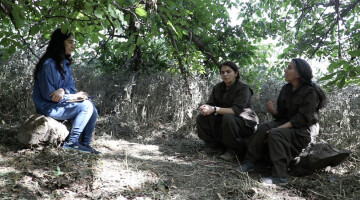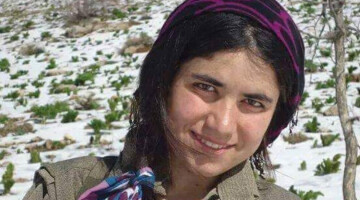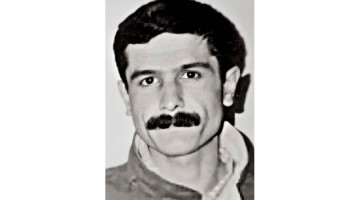Every murder that goes unsolved has opened new doors for new murders. Every murder that is covered up was an invitation for the next. Collaboration, or, in clearer terms, complicity, rose to the fore as the common denominator in political murders.
The intelligence services, politicians, conspiracies, deep relationships and political and economic interests around the hitmen have weaved a wide net.
Some four years ago, on January 9, 2013, three revolutionary Kurdish women were murdered in the middle of Paris by shots to their heads. All three of them took three bullets in the head each. It was the middle of the day. They were at La Fayette street, 147. That was the offices for the Kurdistan Information Center. The bodies of the three revolutionary women were on the floor for hours. For a full afternoon, their phones were left unanswered. Nobody answered the door. Their friends were worried, so they broke the door down and managed to get in. It was well after midnight. A new day had begun. The date was January 10, it was 01.00 a.m.
When the three bodies in the office were discovered, this first shock turned into a shock on a societal level for all Kurds. When it was discovered that the women on the floor were PKK founding member Sakine Cansız (Sara), Kurdistan National Congress (KNK) Paris representative Fidan Doğan (Rojbin) and Kurdish youth movement member Leyla Şaylemez (Ronahi), it resonated throughout the world.
From the first moment on, for the Kurds everything was clear as day. There were no doubts. These were political murders, and Turkey was behind them. This triple murder was committed by a hitman who infiltrated into the circles of the Kurdish movement. He had returned to Paris from Germany about a year ago, and had contacted the Kurdish movement. The hitman signed up as a member to the Kurdish association in Villiers-le-Bel by the end of 2011, and afterwards always tried to get close to the Kurdish militants.
Ömer Güney was detained and arrested following the murders in La Fayette, 147. He denied the allegations. But CCTV footage from neighbors showed Güney leaving the building right around the time of the murders. DNA evidence from one of the victims was discovered on Güney’s coat and his bag had gunpowder residue.
THE ROLE OF INTELLIGENCE AGENCIES
One year after the murders, in January 2014, new evidence started to surface one after the other. In Turkey, the government of Recep Tayyip Erdoğan was in a deep power conflict with their ally Gülen Movement. In such an atmosphere, documents were leaked over the Internet. First, a voice recording was published. In the recording, Ömer Güney was planning the murder with two Turkish intelligence agents. They were planning murders for several Kurdish politicians, and they said they needed a gun. Two days later, on January 14, the document showing the order to the hitman for the assassination was released. The document was dated November 18, 2012. It had signatures from Turkish intelligence agency MİT administrators.
Some days after the documents surfaced, also in January, investigators ruined the plans for Ömer Güney’s prison break. Sources close to the investigation said the hitman, in prison since January 21, 2013, was planning to escape with help from a MİT agent.
The case prosecutor Jeanne Duyé closed the case in May 2015 and sent the file over to Paris Special Aggravated Criminal Court on August 13. The indictment on the murders of Sara, Rojbin and Ronahi included Turkey’s involvement in no unclear terms. There was no more doubt. Turkish intelligence was behind these murders.
The suspect is accused of “committing murder in connection with a terrorist organization”. The investigators have determined MİT provocation and preparation for the murders. But whether the order for the murders came from the top of the state or not is not clear. But, the questions on whether the murders were to sabotage peace talks between the PKK and Ankara entered the case documents. Ankara never took any steps to facilitate the investigation. The investigation in France stopped short at the gates of Ankara. The Turkish authorities refused to share information they had with the investigation. But the investigators revealed that the suspect traveled to Turkey in secret several times and made encrypted phone calls. He also had many photographs of Kurdish militants and sympathizers.
The French intelligence removed the “state secret” seal on just a fraction of the information they had on the three revolutionary Kurdish women. There wasn’t anything new in that information in any case, it was a reiteration of what the public already knew. As such, the French intelligence hasn’t taken convincing steps to disprove the suspicions about them. The French governments’ intense relationship with the oppressive Turkish governments and their long lived anti-Kurdish policies before and after the murders put a heavy burden on France’s shoulders.
HOW DID FRANCE BECOME OPERATION GROUNDS?
Due to the complicity of French government with oppressive regimes, their lands have always been used as operation grounds. There was no struggle against this in any of the cases. Turkish execution units have used France as an operations center since the 1980’s. The key name in the Susurluk Accident in 1996, Abdullah Çatlı, was used against Armenians during Kenan Evren’s term. There were several assassinations and bomb attacks on Armenians in several places in Europe, primarily France.
These are not the only dark murders. In 1988, South African women’s representative Dulcie September and in 1965, Moroccan dissenter Ben Barka were murdered in France. These murders were never solved. Iranian dissenters, Tamils and ETA members fighting for the Basque country were killed in similar murders.
COMMON DENOMINATOR IN THREE ATTACKS: TURKEY
Every time a political murder went unsolved, new ones came along. French authorities failing to reflect a strong stance against the murders of the three Kurdish women brought along new murders connected to Turkey, like links of a chain. Every murder added another link. It should be remembered that everything is connected. This is true for the subatomic level, and for the political sphere.
The attack on humor magazine Charlie Hebdo some two years after the three revolutionary women were murdered, on January 7, 2015, can not be considered separate. The simultaneous attacks in Paris months later on November 13 where 130 people were killed are a continuation in this chain. The common denominator in the attacks of January 9, 2013, January 7 , 2015 and November 13, 2015 is Turkey and complicity. Turkey’s relationship with ISIS, the enemies of humanity who commit these attacks against France, is no secret. Similarly, the close collaboration between governments of France and Turkey in the Syrian crisis is not a secret. Although on varying degrees, not seeing the connections and the responsibilities is to cover up the truth and opening the door for new murders. Although the primary responsibility for the murder of the three revolutionary women falls to the Turkish agencies, the French authorities cannot evade their own responsibility. Solving murders, taking a radical stance in the face of massacres and reevaluating their relationships with oppressive regimes is a necessary condition for prevailing in the future. For justice, there needs to be a true -confrontation, and a principled and clear stance. And that requires a new foreign policy and a just relationship with the Kurds.
*This article by Maxime Azadi was published in January 2016, translated by ANF English service.













